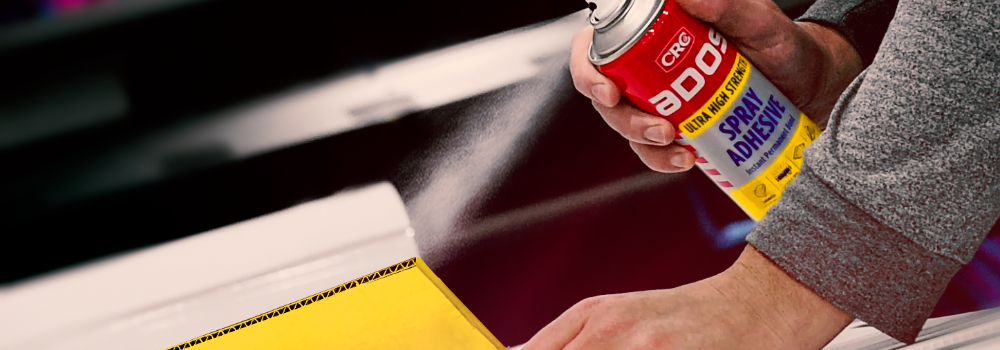Select Delivery Method
Please enter your delivery address to check availability.
Please select your click and collect pick up Branch to check availability.
CRC Industries Australia Launches New Adhesives Range
Workplace noise and recreational noise are the most common sources of noise injury, and the most common form of preventable hearing loss in Australia.
It is estimated over a million employees in Australia may be exposed to dangerous levels of noise at work, with the three highest industry sectors affected by occupational hearing loss being the manufacturing, construction, transport and storage industries.
Agriculture is another sector to report high levels of hearing loss, with 65% of Australian farmers having a measurable hearing loss, compared to 22-27% of the general population. This is often caused through the use of chainsaws, operating noisy workshop equipment, operating firearms and driving tractors.
Noise-induced hearing loss can have consequences for the individual, but also a serious financial impact on businesses, with an average of 3400 successful workers’ compensation claims in Australia every year. Labourers, tradespersons and production and transport workers account for around 88% of these claims.
The importance of effective hearing protection
Utilising personal hearing protection like earmuffs or earplugs is one of the simplest yet effective ways an individual can help prevent noise-induced hearing loss associated with workplace noise.
Employers have a statutory obligation to provide a person hearing protection as necessary for any person employee working in, or near, a noisy environment, however noise-exposed workers are allowed to select their own hearing protection if they so choose.
Choosing the right hearing protection for the right job
Generally, there are two types of hearing protectors used: earmuffs and earplugs. While there are models of both which offer the highest levels of proteciton, noise reduction is just one of many factors to consider in determining the best hearing protector for a noise exposed worker.
Other key considerations when selecting hearing protection include:
- Comfort – Will the wearer be comfortable wearing the protector? Consider the conditions worked in.
- Noise reduction – Will the protector reduce the noise level enough?
- Size – Will the earplugs fit correctly in the ear canal? Not too loose or too tight
- Communication needs – Are there audible warnings or alarms that need to be heard
- Special job requirements – Is there restricted access or objects that could limit the size of the protectors
- Cleanliness – Will the wearer be working in a hygienic or toxic area and need to dispose of the protector
- Compatibility with other PPE – Helmets, shields, glasses etc. all need to be considered
Earplugs and earmuffs each have pros and cons in regards to the 7 considerations listed below. (Fig.1)
EAR PLUGS | EAR MUFFS |
ADVANTAGES | ADVANTAGES |
|
|
DISADVANTAGES | DISADVANTAGES |
|
|
Fig.1
Ratings & Standards
All hearing protectors should be tested to Australian Standards 1270, and as a result of these tests, hearing protection will be given a rating.
Test results are normally stated as an SLC80 rating or the 'Class' classification system.
Sound Level Conversion SLC80
SLC stands for Sound Level Conversion, and is a rating defined as the difference between the sound level of the environment in which the hearing protection device is worn, and the sound level reaching the wearer’s ears. The SLC value includes a correction to ensure that the stated degree of noise reduction is obtained on 80% of occasions, hence the SLC80 rating.
For example, the sound level in a workplace is 104dB (as an average over an 8 hour period). The target “in ear” noise level is 80dB. To calculate the minimum SLC80 rating required for a hearing protector in this workplace would be 104dB – 80db = 24.
The result of 24 indicates that a SLC80
24dB rated hearing protector is required which, based on the table (Fig.2) corresponds to Class 4.
The Class System
Under AS/NZS 1270, there is a classification method for the selection of hearing protectors. Once the extent of the noise hazard has been determined by a noise level survey, the user simply applies this to the classification table (Fig.2) to select hearing protection.
CLASS | SLC80 | Effective for use in noise up to |
1 | 10-13dB | 9dBA |
2 | 14-17dB | 95dBA |
3 | 18-21dB | 100dBA |
4 | 22-25dB | 105dBA |
5 | 26dB or more | 110dBA |
Fig.2
Once you've weighed up all the options and decided which form of hearing protection is best for you, it's time to make a choice.







